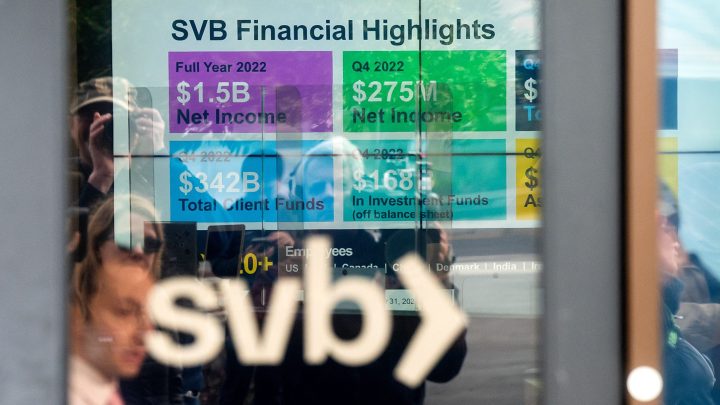
Higher interest rates and troubled commercial real estate are piling pressure on regional banks
Higher interest rates and troubled commercial real estate are piling pressure on regional banks

This week, a number of mid-sized regional banks will report how they did in the most recent quarter. Things haven’t exactly been easy for the regional banking sector ever since the collapse of Silicon Valley Bank last March. And the challenges aren’t done yet.
Ever since the banking crisis last year, a lot of small and mid-sized banks have been trying to prevent their depositors from pulling out their money by raising interest rates on deposits.
“It’s not uncommon for us to see interest expense that’s up 500% to 1,000% for an institution year-over-year,” said David Schiff at the consulting company West Monroe.
Compared to national banks, Schiff said regional banks are more dependent on their customers’ deposits.
“They’re lending out a greater percentage of their deposits,” he said. “They also don’t have some of the diversified sources of income and asset management that larger institutions have.”
Last August, the ratings agency Moody’s downgraded the credit ratings of 10 regional banks — partly because of how hard it’s been for them to raise capital and because of their exposure to the commercial real estate sector.
“The confluence of those things can kind of interact in a way that can be greater than just the sum of their parts,” said Jill Cetina, associate managing director for U.S. banks at Moody’s.
Banks have tools they can use to respond to these challenges, she said.
For instance, they can pull back on certain types of lending. “That might have been a new business segment that they were experimenting with, and they say, ‘I’m just going to wind it down,’ as a way of trying to focus in on what their core strengths are.”
Banks might also try to reduce their exposure to riskier commercial real estate loans. And that could mean making smaller loans when they’re up for renewal, noted Nate Tobik, the founder of Complete Bank Data.
“We gave you a credit line last year of $1 million, and all we feel comfortable doing for your renewal is $650,000,” he said.
Tobik said that the pressures regional banks are facing probably aren’t going away any time soon, adding that interest rates on deposits, for instance, are going to keep pressure on banks even if the Federal Reserve decides to cut rates.
“It’s not going to back to 0% rates, and so this is the new environment that we need to adapt to,” he said.
That means banks are probably going to stay fairly picky, Tobik said, about who they lend to in the near future.
Correction (Jan. 23, 2024): A previous versions of this story misidentified the number of regional bank credit ratings Moody’s downgraded in August 2023.
There’s a lot happening in the world. Through it all, Marketplace is here for you.
You rely on Marketplace to break down the world’s events and tell you how it affects you in a fact-based, approachable way. We rely on your financial support to keep making that possible.
Your donation today powers the independent journalism that you rely on. For just $5/month, you can help sustain Marketplace so we can keep reporting on the things that matter to you.


















